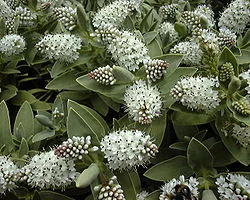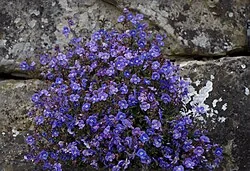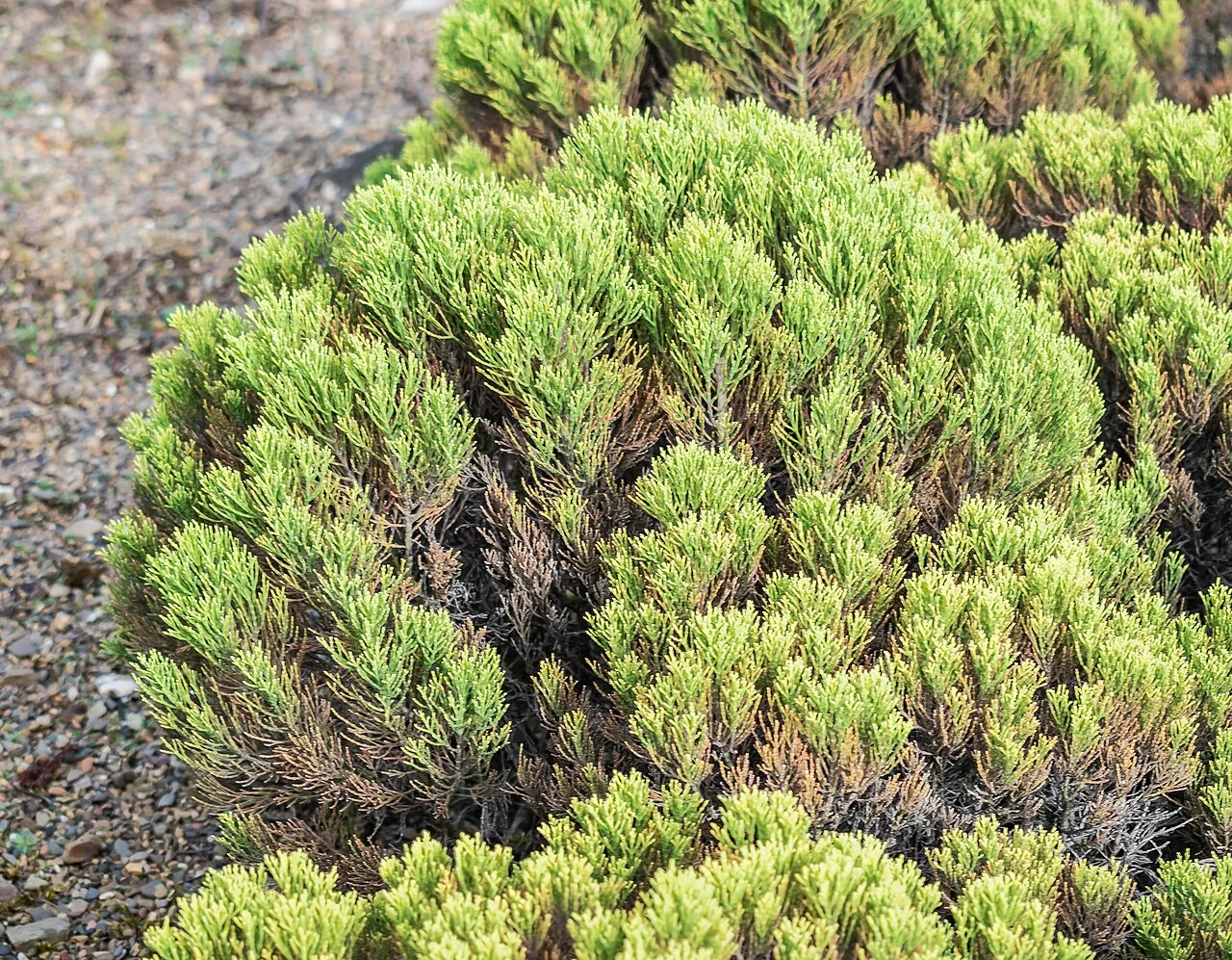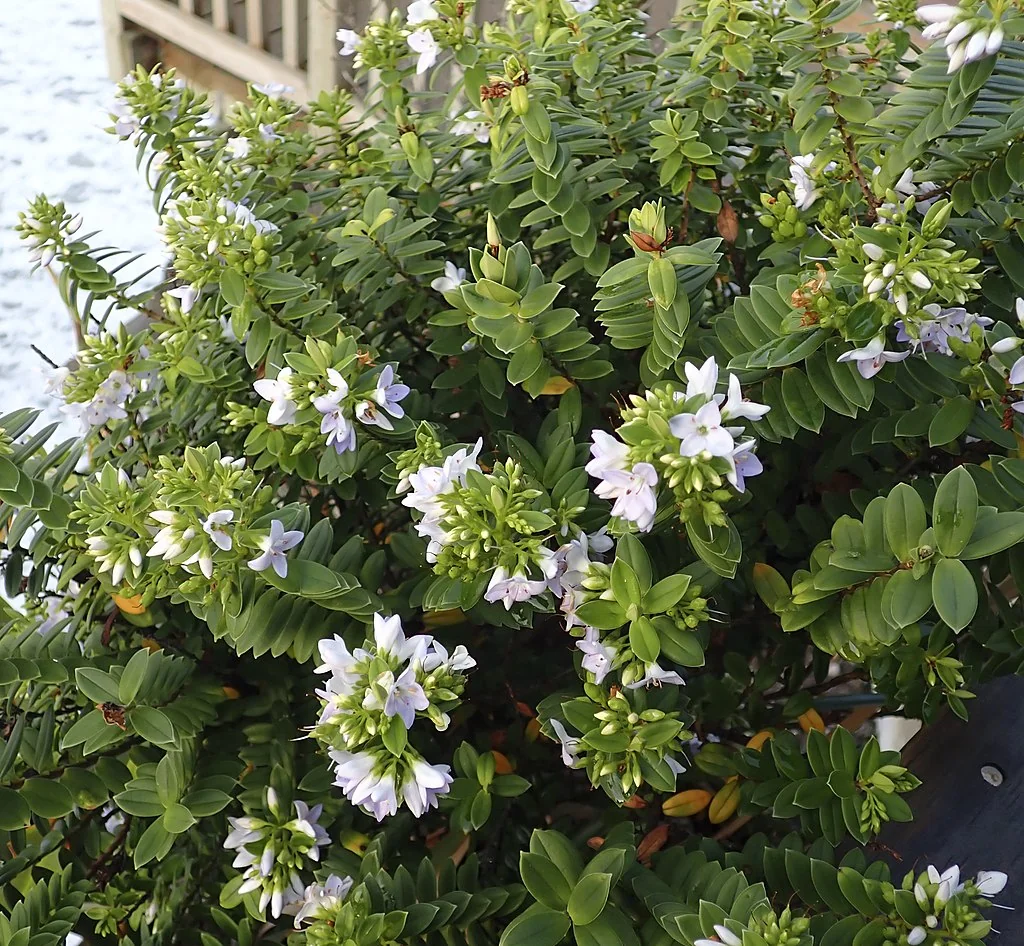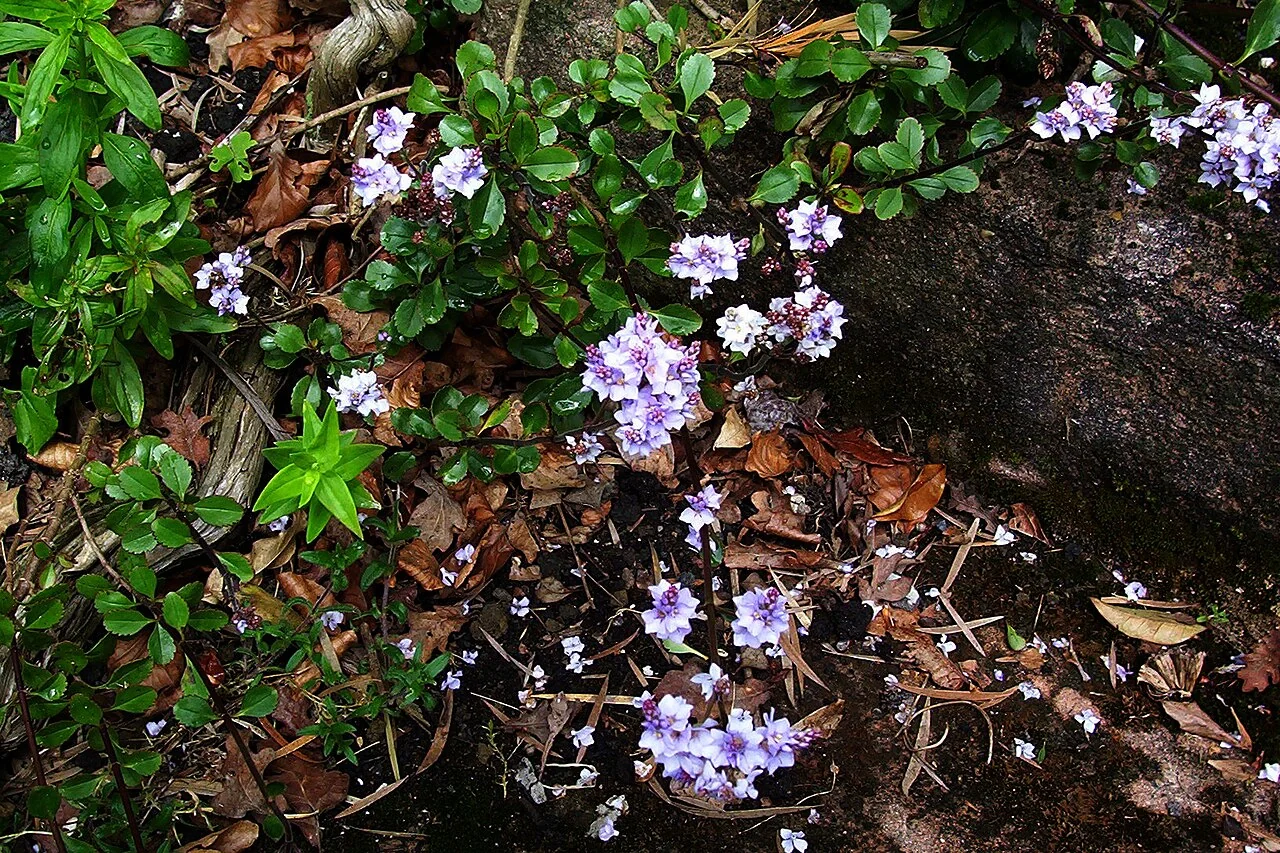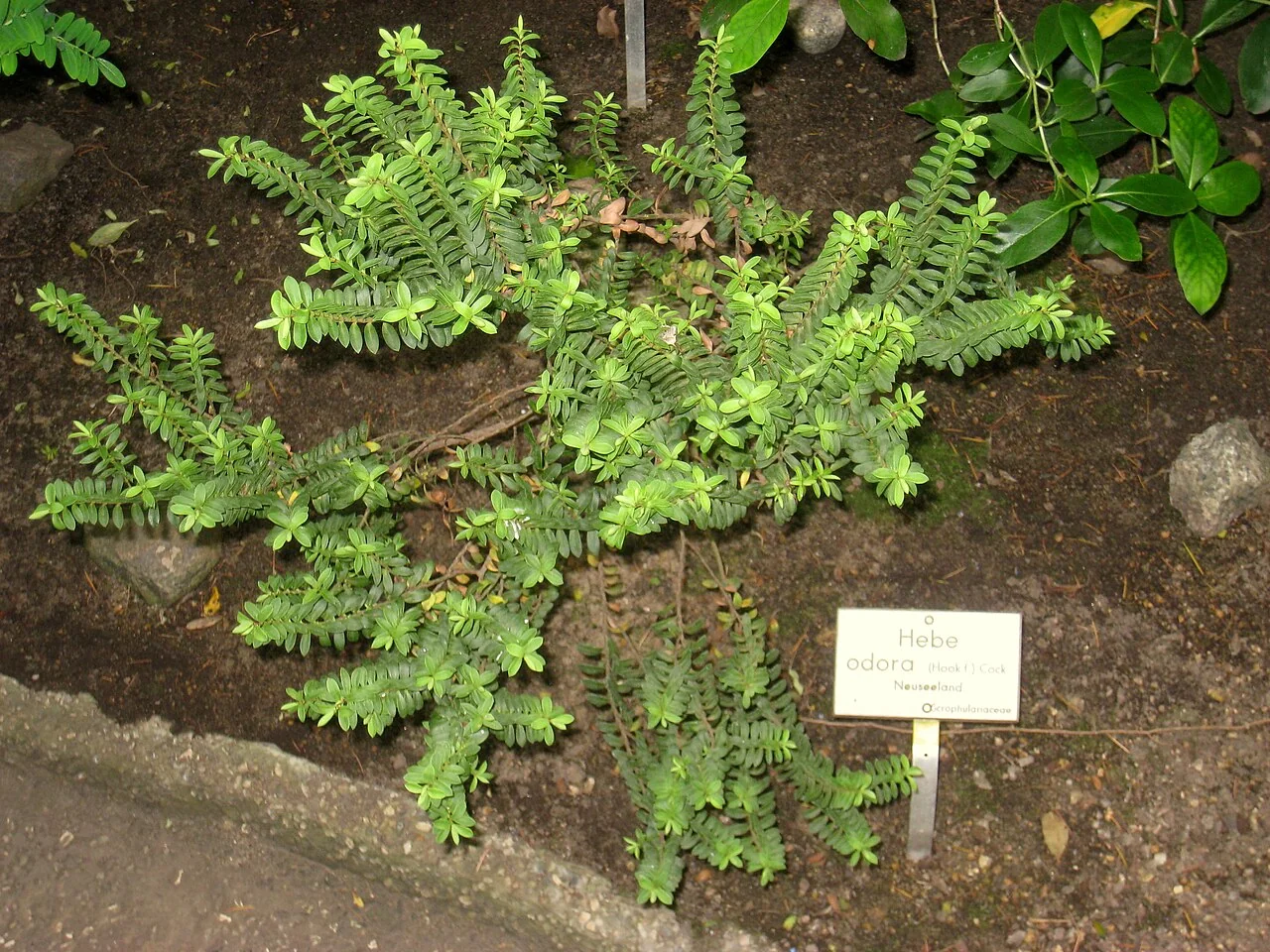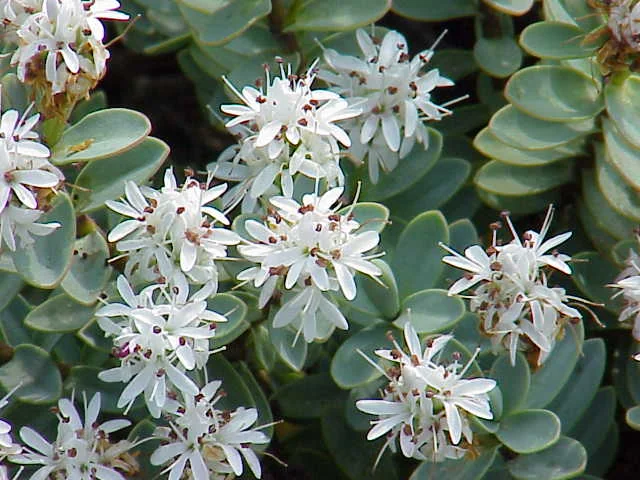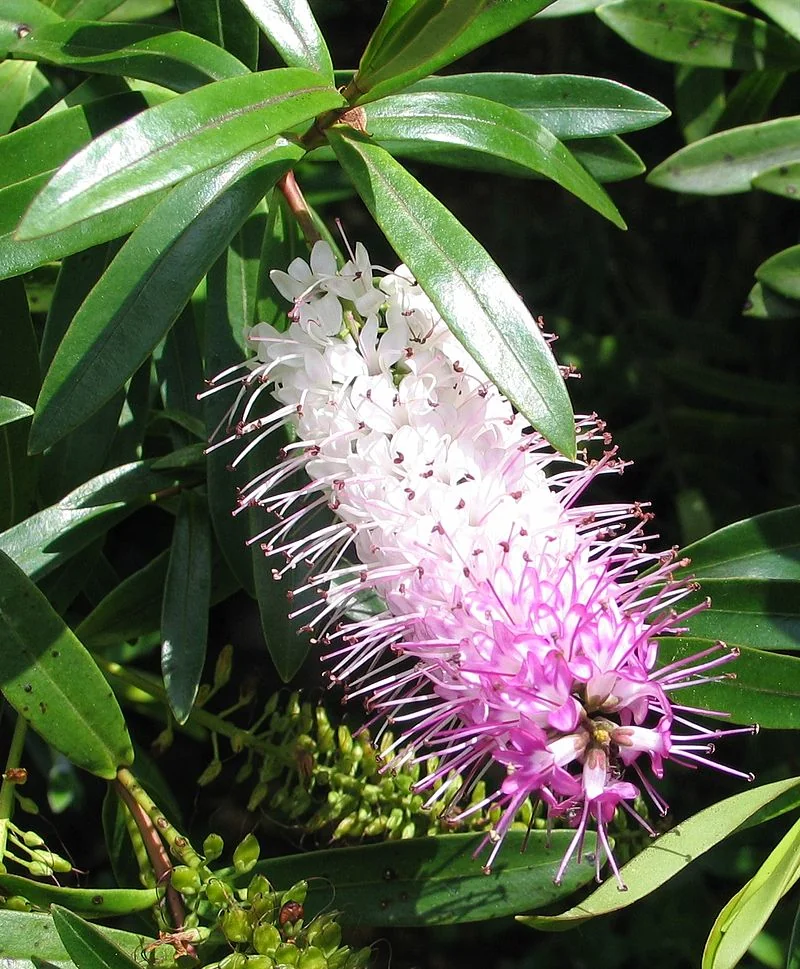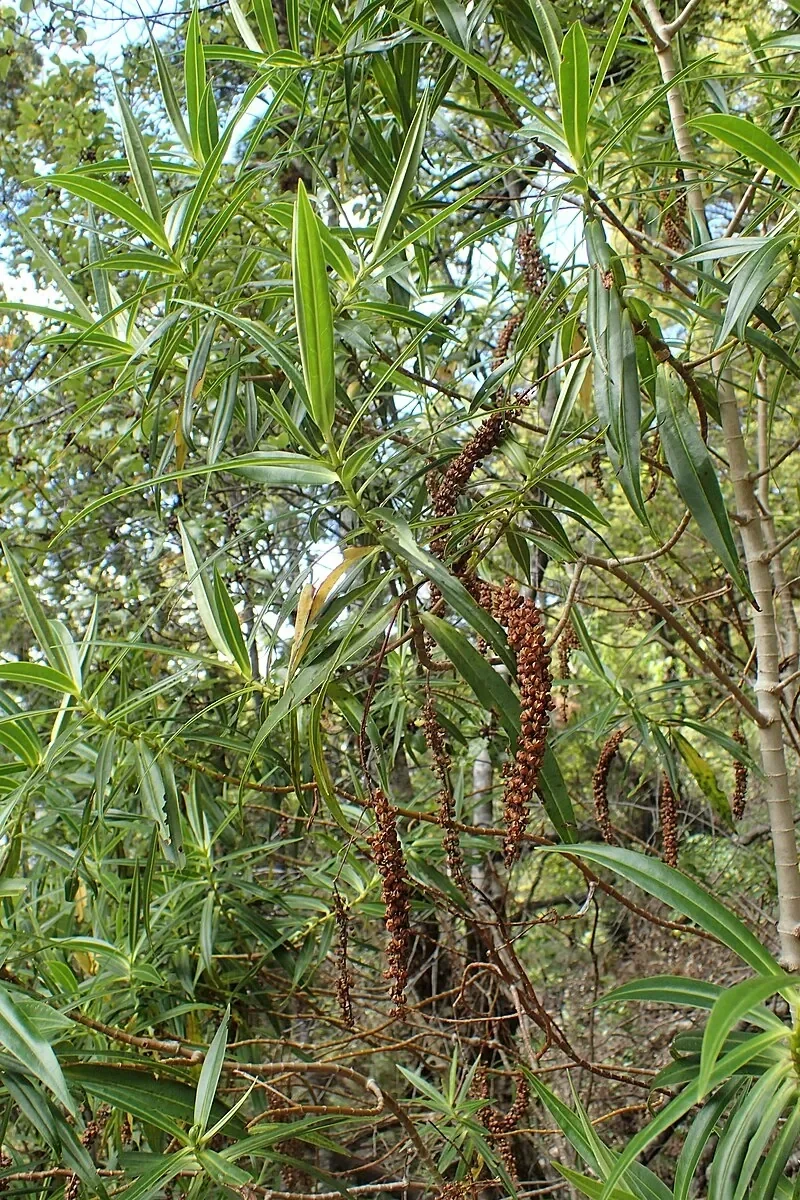
Koromiko
Veronica salicifolia
Introduction
Introduction Overview
Koromiko (Veronica salicifolia, Hebe salicifolia synonym) is a large evergreen shrub. See also Northern Rātā for another climbing plant.

Plant Description
Botanical Features
Koromiko ( Veronica salicifolia ), also known as willow-leaf hebe, is a large, evergreen shrub belonging to the family Plantaginaceae. It is native to the South Island of New Zealand and Chile. It can grow to a height of 1 to 5 meters (up to 2.5 meters commonly) with a wide spread, and its overall form is described as "willow-like" due to its drooping appearance. The plant features light-green, spear-shaped, narrow, oblong leaves that can be up to 12 centimeters long, or even up to 132mm. These leaves are oppositely arranged, can be dark to yellowish-green, and often have hairs on the midrib. The leaf margins can be uneven and have fine hairs. It produces white or pale lilac (violet/purple) flowers that are clustered together on stems up to 24 centimeters long. These flowers are pleasantly strong-scented and appear in summer and autumn. The corolla tube is hairy inside and often outside, and the lobes are lanceolate. Unlike most Hebes, it has downward-hanging capsules that disperse seeds via gravity.
Quick Facts
Quick Facts Overview
| Scientific Name | Veronica Salicifolia |
|---|---|
| Height | 12 meters (36.5 ft) |
| Spread | 12 meters (36.5 ft) |
| Water Needs | Moderate; prefers moist soil but tolerates short dry periods |
| Light | Full sun to partial shade |
| Frost Tolerance | Moderate; hardy in most NZ climates |
| Salt Tolerance | Low; prefers inland or sheltered sites |
| Growth Rate | Fast; establishes quickly in suitable conditions |
| Lifespan | Perennial; several years in garden settings |
Climate Best Suited to
Veronica is native to New Zealand and thrives in the country's diverse climate conditions. It adapts well to various regional climates throughout the country.
Regional Suitability
| City | Climate Suitability |
|---|---|
| Whangārei | Ideal |
| Auckland | Ideal |
| Hamilton | Ideal |
| Tauranga | Ideal |
| Rotorua | Ideal |
| Gisborne | Ideal |
| New Plymouth | Ideal |
| Napier | Ideal |
| Whanganui | Ideal |
| Palmerston North | Ideal |
| Wellington | Ideal |
| Nelson | Ideal |
| Christchurch | Ideal |
| Dunedin | Ideal |
| Invercargill | Ideal |
Natural Habitat
Koromiko ( Veronica salicifolia ), also known as willow-leaf hebe, is a large, evergreen shrub native to the South Island of New Zealand, Stewart Island, Auckland Islands, and southern Chile. It has also been recorded as naturalized in Europe.
Key Habitats Include:
- Diverse Environments: This species exhibits a wide ecological and morphological diversity, inhabiting regions from coastal margins to alpine areas up to 2,800 meters (9,200 ft) above sea level in New Zealand, which is considered the highest elevation for a flowering plant in the country. It primarily grows in temperate biomes.
- Open Sites and Wetlands: It can be found in various open sites, including forest margins, and can tolerate wet areas, often growing on the edge of bush and wetlands.
Preferred Conditions:
- Moist Soil: While it prefers moist soil, it also demonstrates considerable drought tolerance once established.
- Full Sun and Sheltered: It is a hardy plant that requires full sun and a sheltered area with well-drained soil, as it is not tolerant of shade.
- Cold Tolerance: It can tolerate freezing temperatures.
The widespread distribution and adaptability of Veronica salicifolia underscore its ecological importance in contributing to the biodiversity and structural complexity of New Zealand's natural landscapes.
Plant Conservation
Veronica salicifolia , also known as koromiko or willow-leaf hebe, is currently classified as "Not Threatened" in New Zealand by the New Zealand Threat Classification System (NZTCS) as of 2023. This status also applies regionally in Otago, where it was deemed "Regionally Not Threatened" in 2024. Native to the South Island of New Zealand, Stewart Island, Auckland Islands, and Chile, the plant has also naturalized in parts of Western Europe. It is a hardy, fast-growing evergreen shrub that is adaptable to various environments, thriving in open sites, forest margins, and even wetlands, from sea-level to alpine regions. Once established, it exhibits considerable tolerance to drought and frost. While not currently endangered, general threats to ecosystems such as exotic plants (weeds) and pest animals could potentially impact the species. The plant is also known to hybridize with other Veronica species. Due to its hardiness and adaptability, it is considered an excellent plant for revegetation efforts.
Soil Requirements
Veronica prefers well-draining soil with good organic content. It can adapt to various soil types but performs best in loamy or sandy soils.
Water Needs
Veronica requires moderate watering, especially during establishment. Once established , it becomes more drought-tolerant.
Light Requirements
Veronica grows best in full sun to partial shade, depending on the specific species and local climate conditions.
Temperature
Veronica is well-adapted to New Zealand's temperate climate and can tolerate both warm summers and cool winters.
Planting Guide
When to Plant
The best time to plant Veronica is during spring or autumn when soil temperatures are moderate and rainfall is reliable.
How to Plant
Dig a hole twice the width of the root ball and slightly deeper. Place Veronica in the hole, backfill with soil, and water thoroughly. Mulch around the base to retain moisture.
Ecological Role
Wildlife Interactions
This plant plays an important ecological role in New Zealand's native ecosystems. It provides habitat and food for native wildlife and contributes to ecosystem health and biodiversity.
Uses and Applications
Practical Applications
Veronica has various practical and ornamental uses. From traditional Māori applications to modern landscaping, this versatile plant serves multiple purposes.
Historically, Veronica was used by Māori for medicinal purposes, food, and cultural practices. These traditional uses reflect the deep knowledge of native plants.
Landscaping Uses
Landscaping Uses Overview
This plant is highly valued in landscaping for its aesthetic appeal and practical benefits. It can be used in various garden styles and landscape applications.
Seasonal Care Calendar
Spring
- New growth and flowering; prune lightly after flowering.
Summer
- Water during dry spells; monitor for pests.
Autumn
- Collect seed ; tidy up old foliage.
Winter
- Minimal growth ; protect young plants from frost.
Pruning and Maintenance
Pruning and Maintenance Overview
Veronica generally requires minimal pruning. Remove dead or damaged growth as needed and shape the plant to maintain desired form. Pruning is best done in late winter or early spring before new growth begins.
How to Grow Koromiko
Koromiko is a robust and fast-growing native shrub that is relatively easy to cultivate, making it a popular choice for revegetation projects, hedges, and ornamental plantings. Its adaptability to various conditions, coupled with its attractive flowers and foliage, makes it a valuable addition to many gardens. While it tolerates a range of conditions, providing optimal light, soil, and moisture will ensure a healthy and vigorous plant.
From Cuttings
Koromiko is particularly easy to propagate from cuttings, making it a favored method for gardeners. Softwood cuttings can be taken in late spring or early summer, while semi-hardwood cuttings are best taken in late summer or autumn. Select healthy, non-flowering shoots that are about 4-6 inches long. Remove the leaves from the bottom half of the cutting and, if desired, dip the cut end in a rooting hormone to encourage faster root development. Insert the cuttings into a moist, well-draining potting mix, ensuring at least two nodes are buried beneath the surface. Keep the cuttings in a warm, humid environment, such as a propagator or under a plastic cover, until they root. Rooting typically occurs within a few weeks, after which the new plants can be potted on.
From Seed
Growing Koromiko from seed is also a viable option, and it often self-seeds readily in suitable garden environments. Fresh seeds generally have the best germination rates. Sow the seeds in a tray of well-draining seed-raising mix in autumn or early spring. Lightly cover the seeds with a thin layer of fine soil or grit. Keep the seed tray consistently moist and in a sheltered location. Germination can be improved by pre-soaking the seeds in water for 24 hours before sowing. Once the seedlings are large enough to handle, they can be pricked out and potted into individual containers to grow on before being planted out into the garden.
Pests and Diseases
Common Pests
Veronica is generally resistant to most pests due to its native adaptations. However, it may occasionally be affected by common garden pests such as aphids or scale insects.
Disease Prevention
To prevent diseases, ensure good air circulation around Veronica and avoid overwatering. Remove any diseased plant material promptly to prevent spread.
Cultural Significance
Traditional Uses and Values
Veronica salicifolia , commonly known as Koromiko, holds significant cultural importance, particularly among the Māori people of New Zealand. Its cultural significance is deeply rooted in its traditional medicinal applications. For centuries, the Māori have utilized the plant's healing properties. The leaves of Veronica salicifolia were traditionally chewed to treat diarrhea and were applied topically to aid in the healing of ulcers and wounds. It was also used for kidney and bladder troubles, and as a remedy for dysentery and stomach disorders. The general name "Koromiko" in Te Reo Māori is shared across various New Zealand Veronica species, highlighting its widespread recognition and use. Beyond its medicinal Veronica salicifolia is also recognized for its ecological role as a fast-growing, spreading shrub that provides low shelter and is an excellent plant for revegetation. It is also attractive to birds, insects, lizards, and bees.
Bonus Tip
Veronica salicifolia , commonly known as Koromiko, holds significant cultural and medicinal value for Māori. Traditionally, its leaves were chewed to treat diarrhea and applied to wounds. Beyond its medicinal properties, Koromiko is also one of the few Hebes with a pleasantly strong scent, producing abundant nectar that attracts a wide range of insects.
